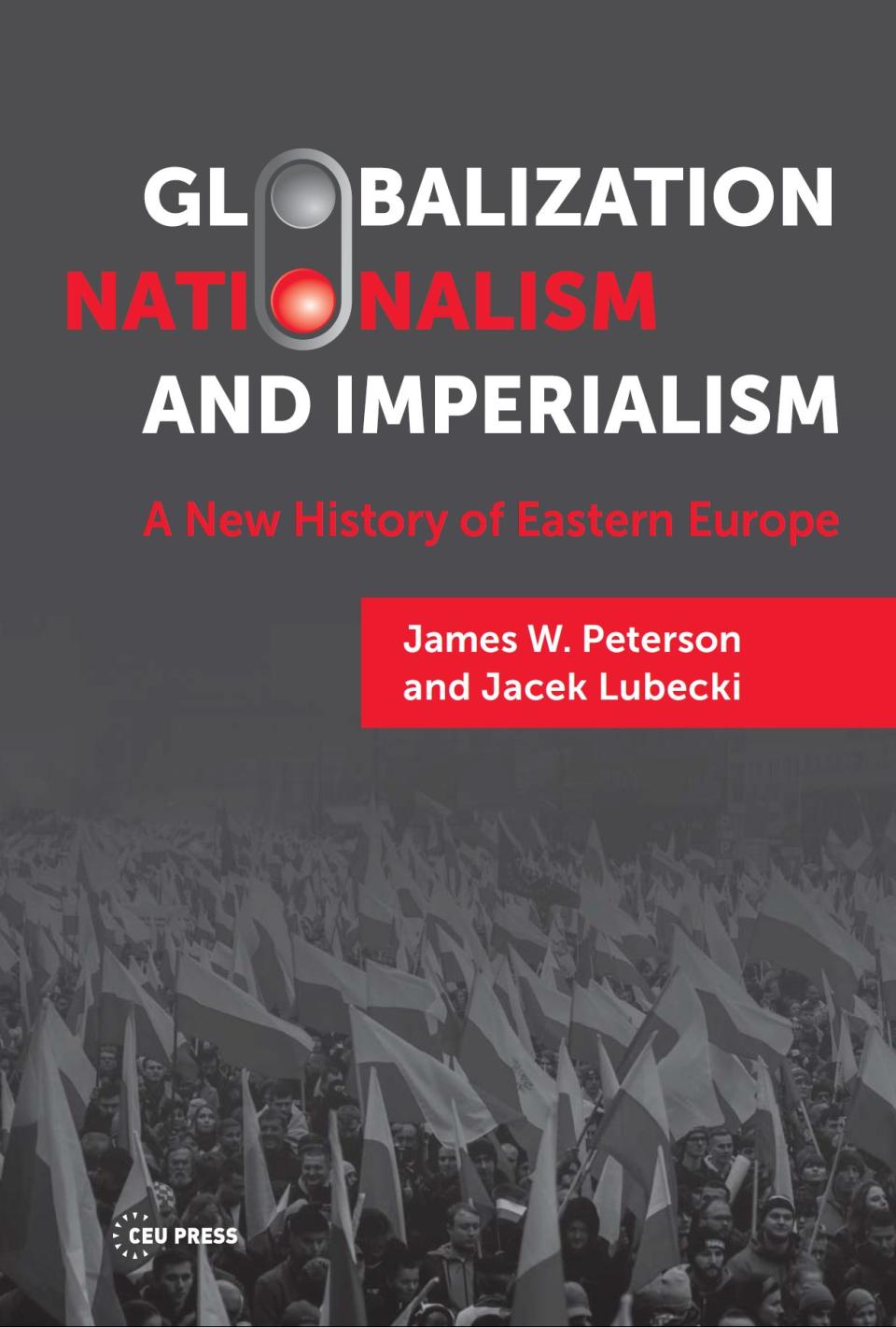The legacy of globalization, nationalism and imperialism in Eastern Europe

Published by: CEU Press

James W. Peterson and Jacek Lubecki’s work on the history of Eastern Europe could not have come at a timelier moment. The full-scale invasion of Ukraine by Russia in 2022 not only shattered the foundational principles of international law but also spotlighted an unprecedented scale of attempt at historical revisionism. Vladimir Putin’s endeavor to justify his “special operation” by distorting historical narratives about Ukraine’s statehood has highlighted the urgent need for a fact-based and accessible recounting of the region’s history and strengthening the resilience among global citizens against widespread falsification of history. In their book, Peterson and Lubecki address these considerations and decode the complex history of Eastern Europe with clarity and precision, successfully providing readers with a comprehensive understanding of the historical context underlying current geopolitical tensions.
The book diverges from the predominant focus on the Russian perspective in Eastern European history studies. The authors instead explore the dialectical tensions among the three major forces of globalization, nationalism, and imperialism, illustrating how each of them has uniquely shaped the national identities in the region: highlighting the richness, complexity, and volatility of each country’s history.
This approach offers a few significant advantages. First, it helps readers unfamiliar with the region to contextualize Eastern European countries within the broader scope of international and global history. It also highlights the interconnectedness between Eastern Europe and its Western neighbors and shows how Western countries have often influenced major historical events in Eastern Europe through their decisions or lack thereof. Moreover, by categorizing the history of Eastern Europe into distinct periods—pre-First World War, the interwar period, the Cold War era, and the post-Cold War — the authors provide a nuanced understanding of the region’s political evolution up to the modern day.
The authors use various theories to analyze the effects of globalization, nationalism, and imperialism. They use the “legacy theory” to clarify the formation of nationalist identities in Eastern Europe vis-à-vis old forms of imperialism. Additionally, the “divergence and convergence theory” is used to explain the varying manifestations of global and transnational forces across different countries. The “public policy formation theory” helps in understanding domestic decision-making processes, while the “realist theory” is utilized to interpret state interests in international and historical tensions. Although these theories help to structure the argument and understand the region’s history within a theoretical context, the authors could have expanded on these theoretical foundations as at times they seem less incorporated into the narrative of the history.
The lengthy and difficult transition period was successful due to the overwhelming public support for liberal democracy and the desire to “join the West” in these countries.
In the first and second chapters, the authors debunk the widespread myth that Eastern European countries were solely authoritarian before the Soviet Union’s collapse. Except for Hungary, all Eastern European nations experienced some characteristics of liberal democracy during the interwar period. However, these signs were eventually overpowered by Nazi and Soviet imperialist forces. In the post-Cold War era, liberal nationalism was the primary catalyst for movements seeking independence and implementing economic and political reforms. Despite sporadic ethnic nationalist tensions, as seen in the former Yugoslavia, many countries such as Poland, Hungary, and the Baltic states succeeded in establishing democratic polities.
The third chapter reveals that Eastern European leaders were eager to adopt economic policies aligned with the so-called Washington Consensus economic model to integrate into the global economic system. The lengthy and difficult transition period was successful due to the overwhelming public support for liberal democracy and the desire to “join the West” in these countries. However, previous economic developments also played a role. Countries with stronger economic histories, like the Czech Republic, the Baltic countries, Poland, Slovenia, and Hungary, tended to be more successful in their transition efforts. Thus, by the 2010s, these countries were fully integrated into the global economic and political order, unlike many ex-Soviet states.
While the book depicts the triumph of liberalism and free-market economics in the region, it also acknowledges that Eastern Europe, despite being generally regarded as a successful example of Westernization and globalization, harbors a plethora of anti-liberal, ethnic nationalist, and populist sentiments. Globalization and liberalism have been instrumental in Eastern European countries’ integration into the EU and NATO. However, they have also brought about global political challenges in the region, including terrorism, populism, and illiberalism, particularly in Hungary and Poland in the 2010s. Nationalism has also been a double-edged sword, helping to build national identities but also sparking ethnic conflicts in the region.
The book’s central message is that the forces of imperialism, once deemed extinct, have resurfaced in Europe with Russia’s invasion of Ukraine, stirring geopolitical insecurities in the region.
The book’s central focus is the domestic and international security challenges Eastern Europe faces against the background of Russia’s renewed imperial ambitions. The authors point out that the threat from Russia has been a constant concern for many Eastern European countries, especially Poland and the Baltic states. After the Soviet Union’s dissolution, these nations rushed to join NATO and the EU to guard against potential Russian threats. The book underscores Russia’s hostility towards its neighbors, evident from as early as the 2008 war against Georgia. However, the concerns heightened after the invasion of Crimea in 2014 and ultimately the full-scale invasion of Ukraine in 2022. This prompted NATO’s further expansion into countries like Finland and Sweden and hastened the rearmament efforts of European countries. The book’s central message is that the forces of imperialism, once deemed extinct, have resurfaced in Europe with Russia’s invasion of Ukraine, stirring geopolitical insecurities in the region. Therefore, the outcome of the war in Ukraine will have an enormous influence on not only the security landscape but also the stability of liberal democracy in the region of Eastern Europe.
Overall, Peterson and Lubecki’s book is essential reading for those seeking to understand the complexities of Eastern European history and its impact on the present. Engaging, enlightening, and thoroughly researched, it highlights the dynamics that have shaped the destinies of Eastern European nations. The book demonstrates the enduring legacy of globalization, nationalism, and imperialism and serves as a powerful guide for both policymakers and citizens to engage with the region’s past and present realities in a rigorous and sensible manner.
Lia Chkhetiani graduated from Central European University in 2023 with an MA degree in Political Science. She currently works as a researcher of democratic institutions at the Georgian NGO Social Justice Center. Her academic interests revolve around comparative politics and democracy, with a particular emphasis on post-communist countries.
